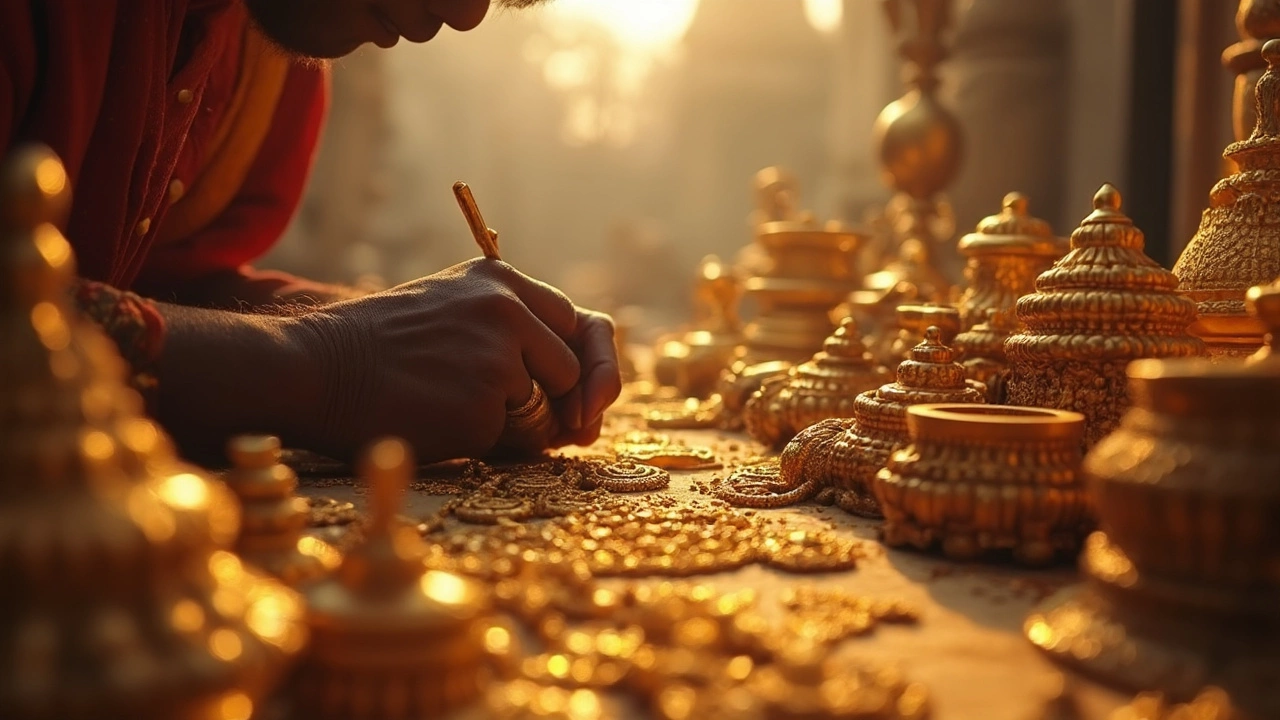Yellow Gold – What It Is, Why It Matters, and How to Buy Smart
When talking about Yellow Gold, the classic, warm‑toned metal used in traditional Indian jewellery. Also known as gold jewellery, it blends cultural heritage with everyday style. Yellow gold isn’t just a color; it’s a family of purity grades that affect look, durability and price.
One of the most common purity levels is 24K Gold, pure gold with 99.9% gold content. While 24K shines brightest, it’s soft and prone to scratches, so many shoppers opt for 22K Gold, a blend of 91.7% gold and 8.3% alloy for a balance of brilliance and strength. Another label you’ll see is the 750 Stamp, the hallmark indicating 18K gold (75% gold purity). Understanding these grades is the first step to choosing pieces that fit daily wear or special occasions.
Price Factors and Comparison Across Markets
Yellow gold pricing isn’t static; it reacts to global markets, local taxes and the purity you choose. In India, the base price per gram often includes GST and local markup, while the U.S. price adds import duties and market premiums. A simple gold price comparison shows that buying 22K or 18K gold in India usually costs less per gram than importing the same piece from abroad, thanks to lower taxes and a huge domestic supply chain. However, exchange rates can flip the advantage, so savvy buyers track daily rates before making a purchase.
Beyond raw cost, the value of yellow gold jewelry depends on craftsmanship, brand reputation and design trends. Pieces that blend traditional motifs with contemporary cuts tend to retain resale value better than mass‑produced items. If you’re eyeing an investment, look for hallmarked items, reputable makers and designs that appeal to both nostalgic and modern tastes. This approach aligns with the broader principle that “gold that tells a story holds its value longer.”
Putting it all together, buying yellow gold means matching purity, price and purpose. First, decide whether you need a soft, high‑karat piece for occasional wear or a tougher 22K/18K option for daily use. Next, compare local and international rates, remembering that taxes and hallmarks can sway the final cost. Finally, assess design and brand credibility to ensure the piece stays a cherished accessory rather than just a metal purchase. Below you’ll find a curated collection of articles that dive deeper into gold purity, price trends, buying tactics and more—each one packed with practical tips you can apply right away.

